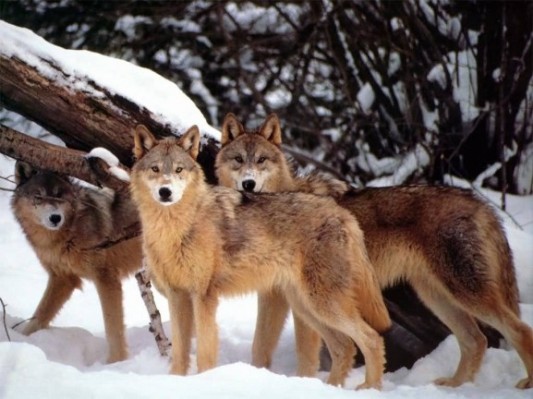LAST UPDATED: May 1st, 2015
Earlier this week the Wisconsin Department of Natural Resources (WDNR) issued a public statement in support of the U.S. Fish and Wildlife Service’s possible decision to delist the state’s wolf inhabitants. The strongly-worded manifesto constructs a compelling case for reasons why the state should be allowed to manage this wolf population. A population the WDNR Secretary says – is thriving.
The Department of Natural Resources firmly supports the U.S. Fish and Wildlife Service in delisting the wolf in the upper Great Lakes states. Wisconsin has exceeded its delisting goal eight times over and must have flexibility to manage problem wolves if any support for wolves by the public is to continue.
While the department is committed to long-term conservation of wolves in Wisconsin, it is critical that we be allowed to manage wildlife populations within our borders. Wisconsin has approximately 800 wolves; this is the most wolves ever counted in the state. Wolf numbers far exceed the federal delisting recovery goal of 100 wolves for both Wisconsin and Michigan, and are causing real problems.
The Wisconsin wolf population is estimated at 800 animals.
It is time for management of wolves in Wisconsin to be turned over to us. The same is true for Minnesota and Michigan. For this to happen, the wolf must first be removed (delisted) from endangered or threatened status under the Endangered Species Act.
We support the USFWS in its current attempt to delist, but we also strongly disagree with its conclusion that a newly discovered and separate species of wolf exists in the Western Great Lakes. Wisconsin’s wolves are the same species that was listed in 1978, and are most closely associated with the gray wolf. Recent genetic analyses refute the existence of Eastern wolves as a separate species. Wisconsin’s wolves are of mixed genetics, but they are physically indistinguishable, readily interbreed, and occupy the same range.
Wolves in Wisconsin act and behave as a single population and must be managed as a single population. Accordingly, our message to the USFWS is clear and strong: Don’t muddy the waters with this indefensible two-population concept. We need a solid, defensible, delisting proposal, and we need it now.
Minnesota, Michigan, the U.S. Sportsmen’s Alliance, the Wisconsin Wildlife Federation, Defenders of Wildlife, Timber Wolf Alliance, and the Natural Resources Defense Council, prominent scientists actively working with wolf genetics, and other organizations and government agencies support Wisconsin’s position: Wisconsin has a gray wolf population that has successfully recovered.
The public grows weary of the delays and government inaction. They need to know that their state DNR is pushing hard to get this done. The ball is in the USFWS’s court, again. It needs to make the right decisions and to publish an effective delisting rule that will withstand challenges from those opposed to the delisting of wolves.
I will not stop pushing on this issue until we have delisting of wolves and relief for Wisconsin residents who are seriously struggling with our unchecked and unmanaged growing wolf population. That’s a promise.
Wisconsin hunters are asked what they think of the possibility of wolf delisting in their state. Let your voice be heard, we encourage you to check out our Facebook page and tell us what you think. Should the WDNR be able to manage its own wolf population?






